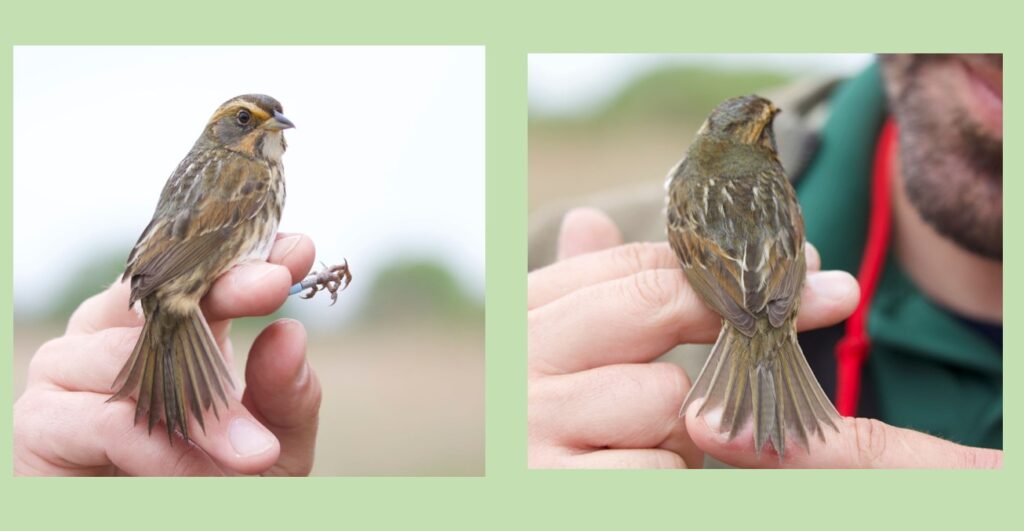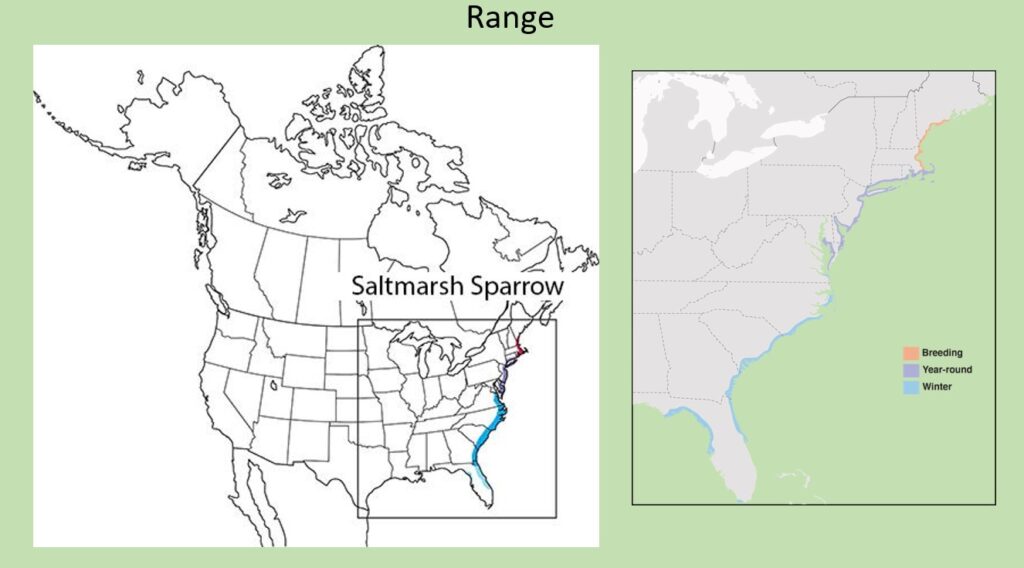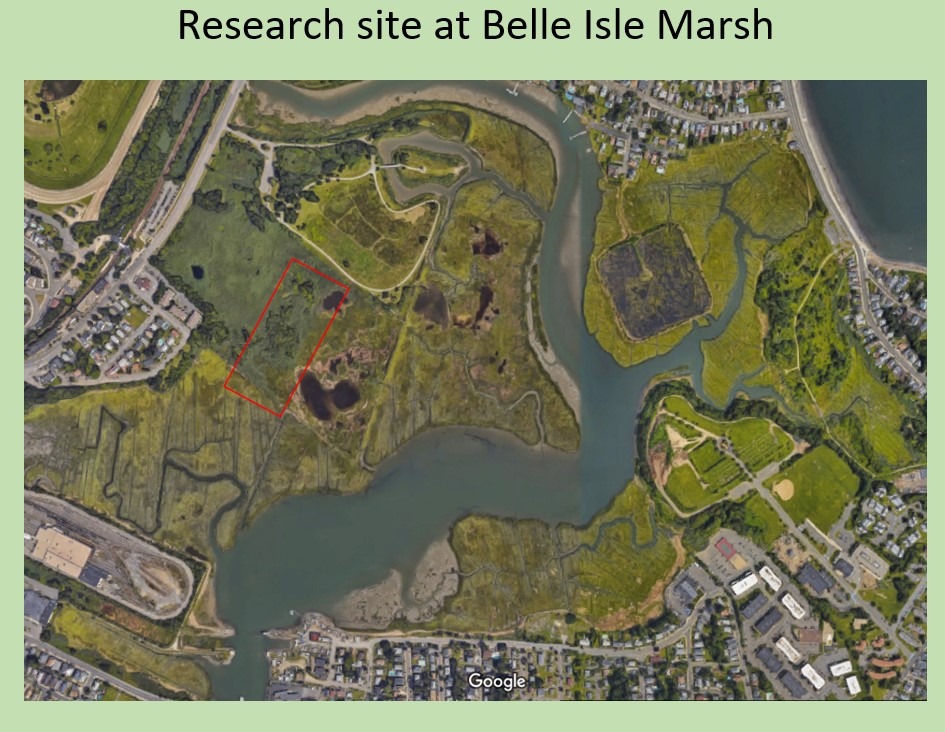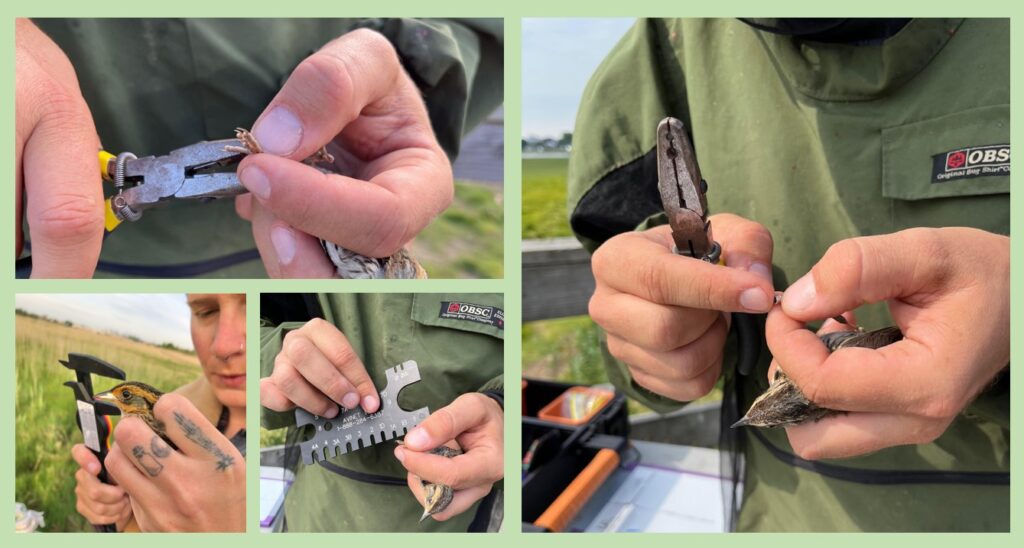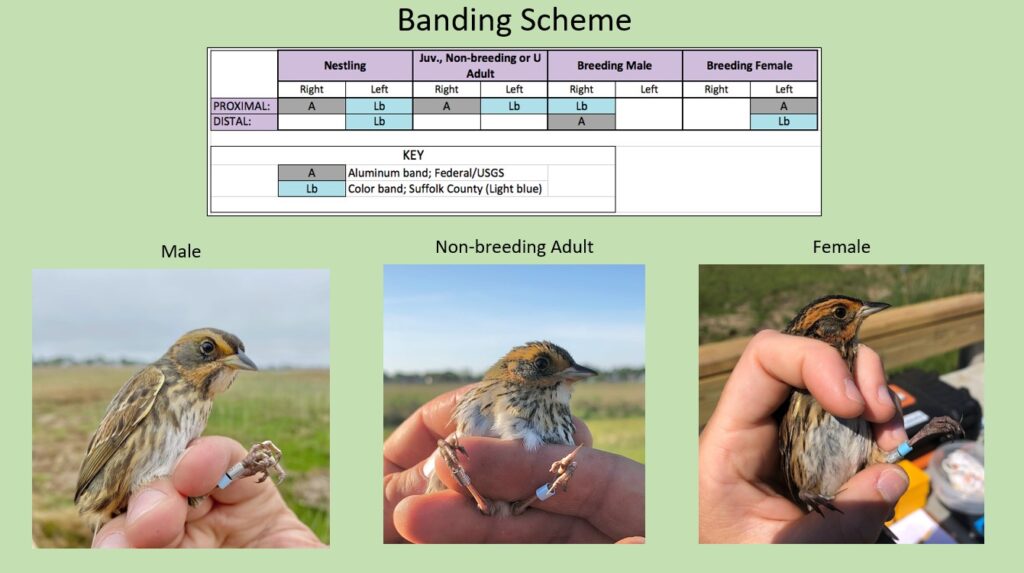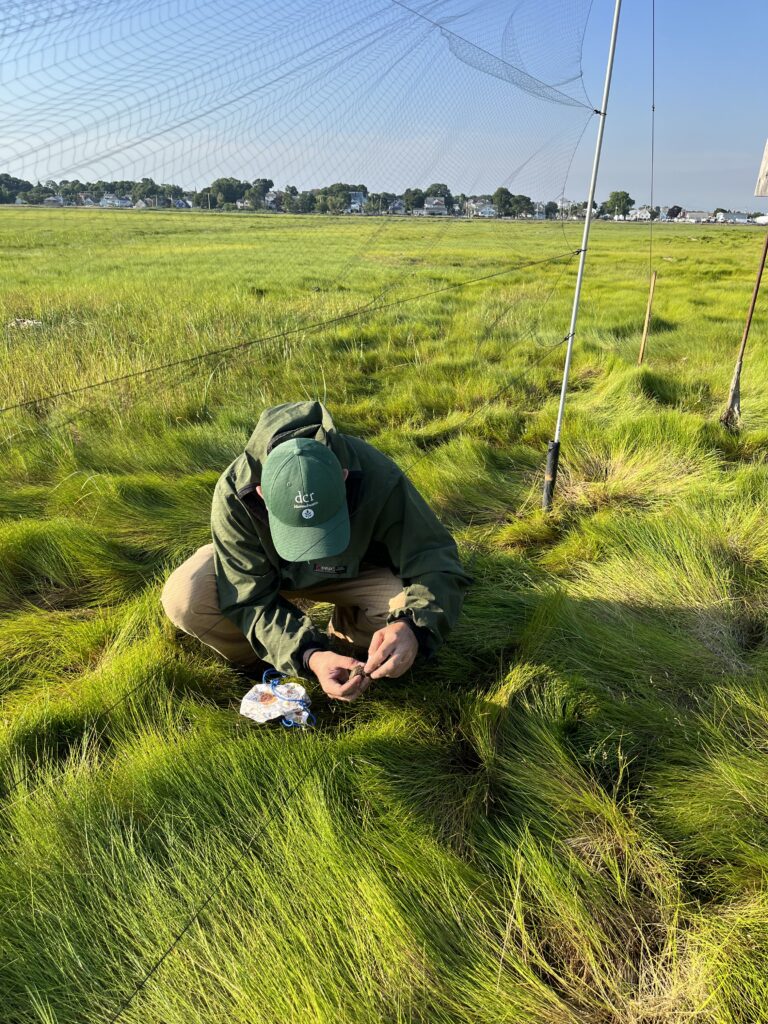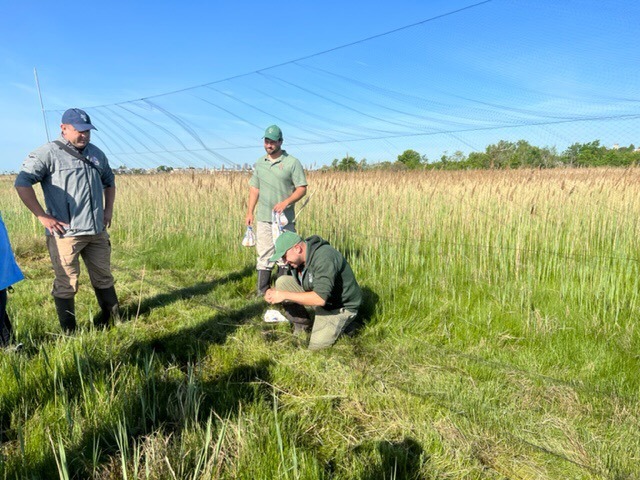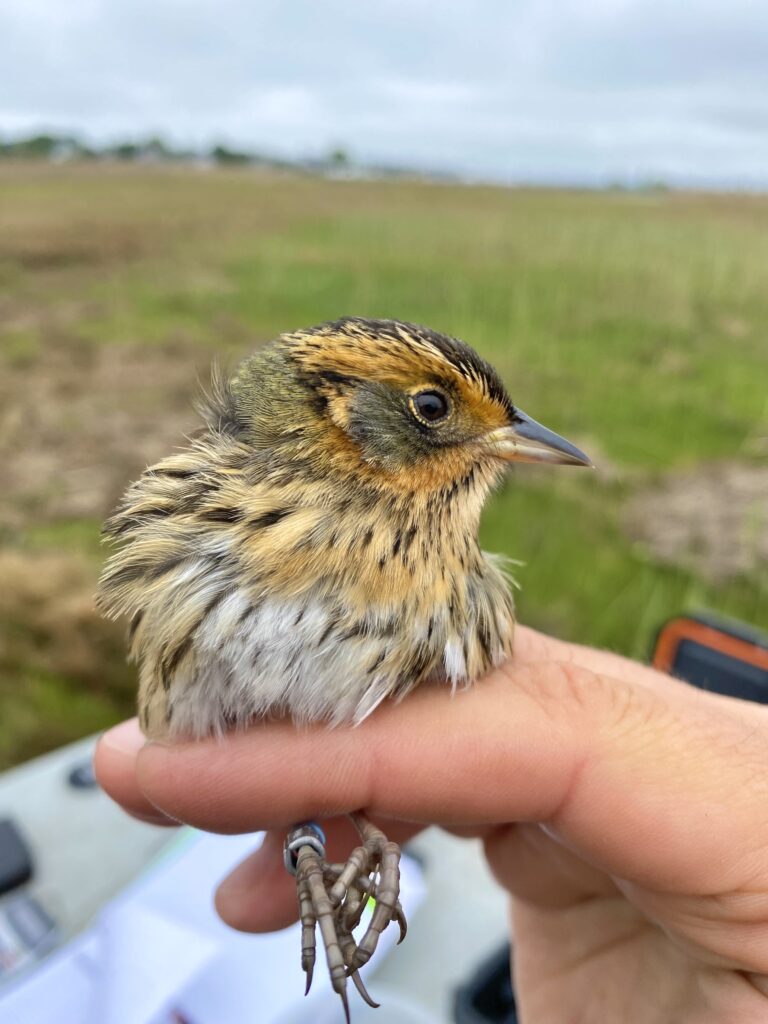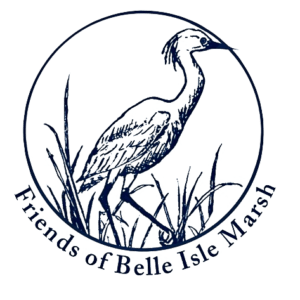For those not intimately aware of the plight of Saltmarsh Sparrows, here is a very brief background. Saltmarsh Sparrows are the only species of bird endemic to the Eastern United States, meaning they only breed in eastern coastal marshes. They now have about a 9% annual decline with roughly 87% of their population lost in the last decade from sea level rise. Many concerned bird experts think it is realistic that Saltmarsh Sparrows will be functionally extinct by 2050 as a breeder without tremendous and sweeping intervention. As a species these sparrows require high marsh habitat to breed, pretty much all high marsh zones require saving via intensive restoration efforts in all of our Eastern Marshes.
I started counting Saltmarsh Sparrows at Belle Isle in 2016. We conducted standard point count surveys of the species, and from 2016 to 2020 we always came up with roughly 8-10 birds at the reservation during our counts. The breeding population seemed to be contained to one small area in the reservation, so the count tally seemed reasonable at the time. Fast forward to 2021, we decided to start banding the Saltmarsh Sparrows at Belle Isle, this was mainly to see if this process could yield some new information on the site’s population and site fidelity, essentially evaluating numbers of annually returning birds.
In 2021 we banded 17 birds, almost double the number of birds we suspected were present at Belle Isle. In 2022 we banded an additional 31 new birds bringing the total number of banded birds to 48, with many un-banded birds still being sighted. Basically wow, lots of birds here ! We also recaptured more than half of the birds banded the year prior, showing that the birds were returning to the same site. We even recaptured a bird banded as a recently fledged juvenile, showing that hatch year birds are also returning to their natal sites.
So what does all this mean ? While our data is not yet complete, it is starting to paint a picture that it is basically impossible to estimate a location’s population of Saltmarsh Sparrows by doing traditional wildlife point counts, banding data must be collected. These birds are running on the ground most of the time, and often not popping up when counts are being conducted. We are learning that even sites like Belle Isle that are considered small from an acreage perspective are critical in maintaining this species population, as they return to the same breeding site year after year. We are now working on building a data set model that will help other locations potentially estimate their population when combining both a banding and point count matrix.
Our work, thanks to research funding and support from Friends of Belle Isle Marsh, our partnership with Geoff at Northeast Wetland Restoration, and the SmartTeams has caught the attention of the Atlantic Coast Joint Venture (ACJV) we are on a very short list of marshes in Massachusetts that is listed as high priority for important habitat and likely funding once the species is federally listed. All this data tied in with the climate assessment conducted by Woods Hole Group for FBIM and MyRWA puts us in a very encouraging position to make meaningful restoration interventions at Belle Isle for these birds, their required habitat, and then will provide an important blueprint for other sites to model.
-Sean
